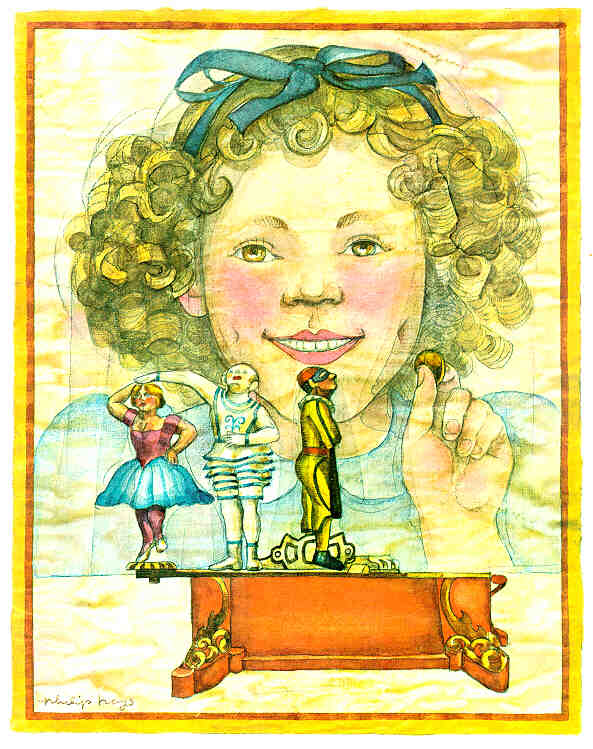FORERUNNERS OF HISTORY
STEELWAYS, Published by American Iron and Steel Institute, March, 1964

General Grant was President, two infant industries (oil and steel) helped put the nation’s economy in high gear, the first transcontinental railroad car reached New York from the Pacific Coast — and John D. Rockefeller incorporated the Standard Oil Company with a million dollar capital.
It was 1870. The year also saw the birth of a new toy that was more than a toy — the cast iron mechanical penny bank. It was designed to encourage youngsters to save by giving them a little free show with each penny put into the bank.
One of the first to be patented, an ingenious creation called Hall’s Excelsior Bank, worked like this: The user pulled open a hatch on top of a cast iron bank-shaped building and up popped a tiny banker standing behind a desk. When a penny was placed on the desk, the apparatus closed and the penny dropped inside. Such action distinguished mechanical banks from "still" banks, which had merely a slot and presumably were used only by children who wanted to save and didn’t require a show as incentive.
Mechanical penny banks grew popular as inventors vied with each other to produce the
most intricate (and workable) bank. The fertile imagination of Yankee craftsmen, using
easily controlled and durable cast iron, created hundreds of amusing mechanical actions to
whisk a banked penny out of sight and delight the thrifty. Some of the popular banks were:
= William Tell: A penny placed in
front of Tell’s bow was fired at an apple on his son’s head. The penny sailed
past the apple and dropped into a castle behind the boy.
= Girl Skipping Rope: Bank was wound with a key, then a coin was placed in a slot and a lever pushed. The girl skipped rope realistically, moving her head and causing the coin to fall into the bank.
= Harlequin, Clown and Columbine: Three English pantomime figures twirled and danced in response to a deposited coin.
An estimate by the "Compleat Collector" magazine states that about 260 different models of mechanical banks were made up to 1885. By the turn of the century interest in mechanical banks began to subside. For 20 years they were ignored. Then a few people — mostly bankers — began seeking them out.
Classified as antiques, the little banks suddenly became valuable, whether or not they contained coins. Early collectors who managed to round up a few hundred of the old banks (which had once wholesaled for 50c to a dollar) discovered that their collections were worth thousands of dollars. So avid is current interest in old cast iron mechanical banks that F.A.O. Schwarz toy store in New York City stocks dozens of them in its antique toy department.
Mrs. Sally Erath, manager of the department, has a waiting list for certain models most in demand. Included are Harlequin, Clown and Columbine, $2500, and Girl Skipping Rope, $750. The demand for antique mechanical banks has apparently stirred interest in new mechanical cast iron banks; 30 manufacturers have begun producing them.
Interest in thrift, whether it is represented by penny banks or in the nation’s banking institutions, is still very much part of the U.S. scene, despite the frequent caricature of the American as a spendthrift. In 1870, when the Gross National Product (the total yearly value of the nation’s goods and services) was a mere $6.7 billion, banks (not the penny variety) held a total of only $500 million in savings. America’s GNP approached the $600 billion mark in late 1963 and savings accounts reached $246 billion as estimated by the National Association of Mutual Savings Banks.
Providing banks and industry with safes and vaults made mostly of steel, is itself a $50 million a year business. One vault located in a New York bank is such a marvel of construction that 100,000 non-banking visitors a year go in just to see it. They usually head for the vault’s 30-ton steel door, 7 feet in diameter and nearly 2 feet thick. The entire vault is lined with heavy plate steel.
Although economic progress is now measured in billions of dollars, the penny is still a popular coin for savings. The comeback of the penny bank demonstrates this. So does the report by the firm of Arthur D. Little, Inc., that since 1943 about 800 million pennies have disappeared from circulation.
